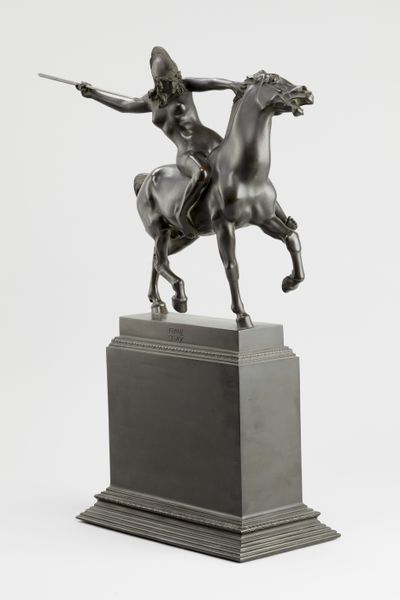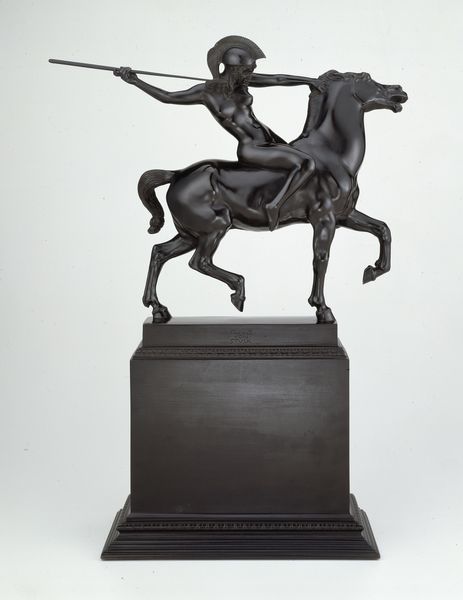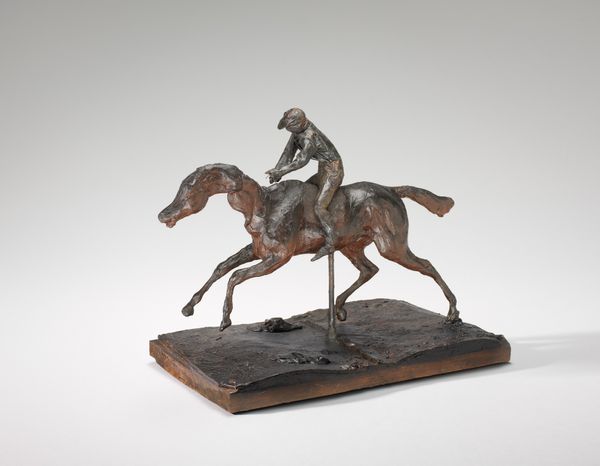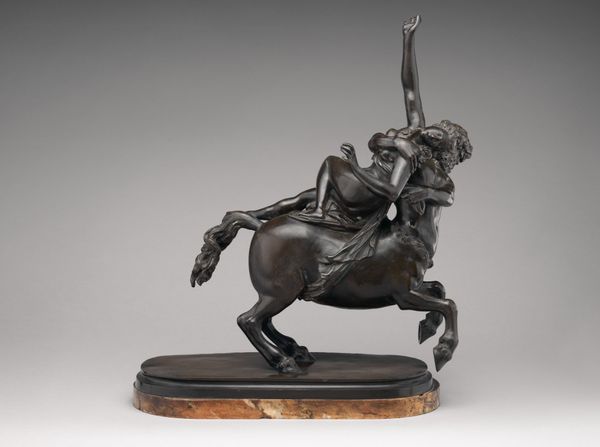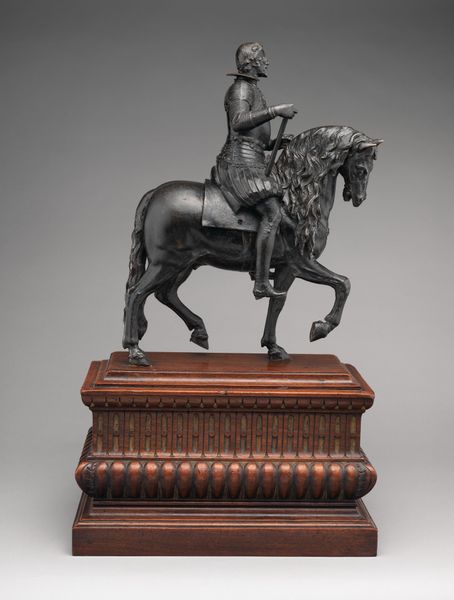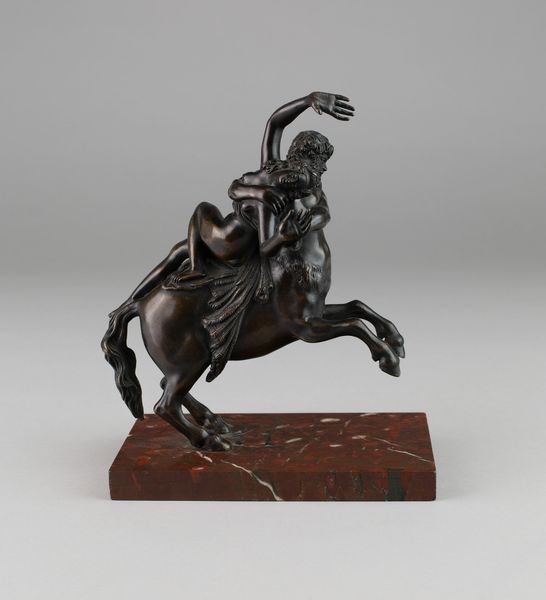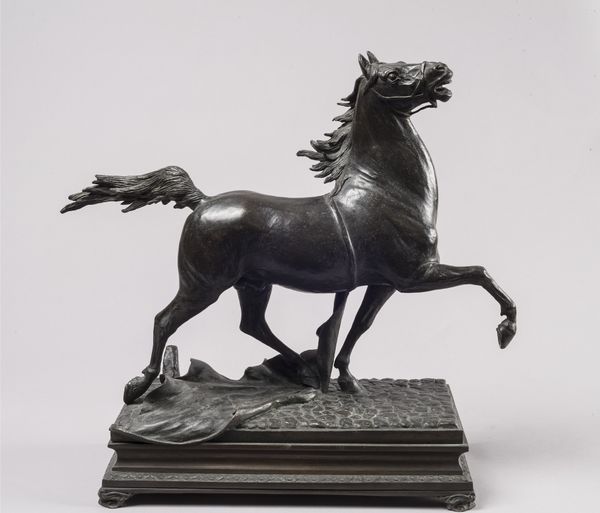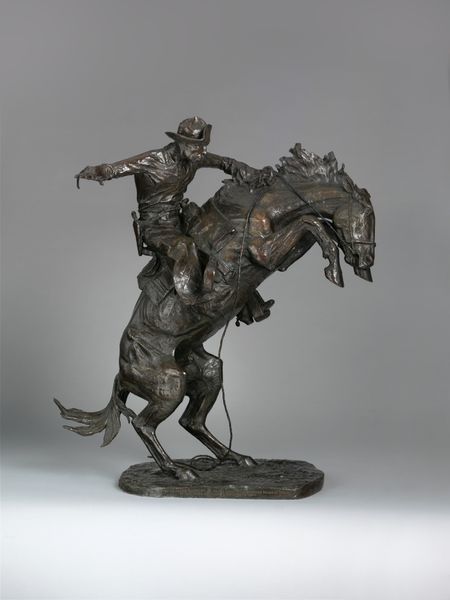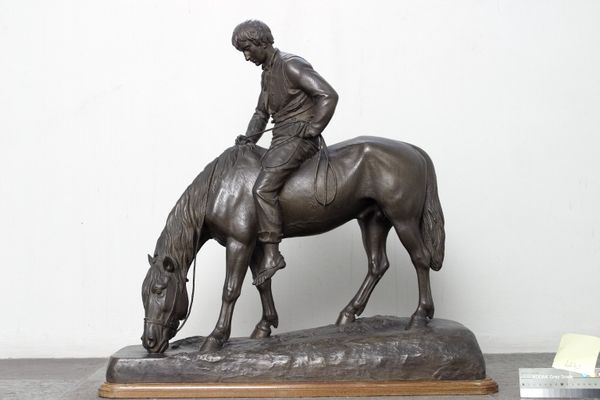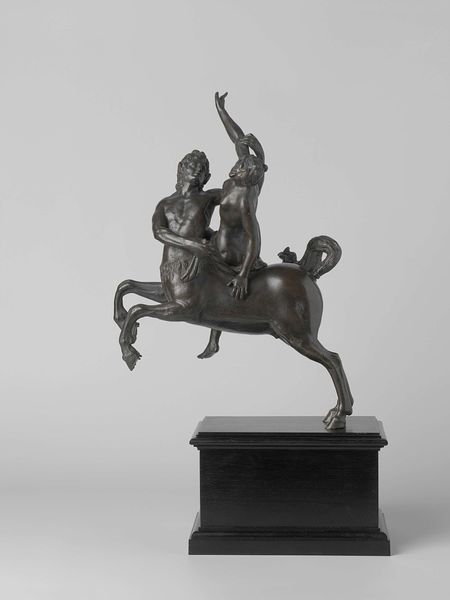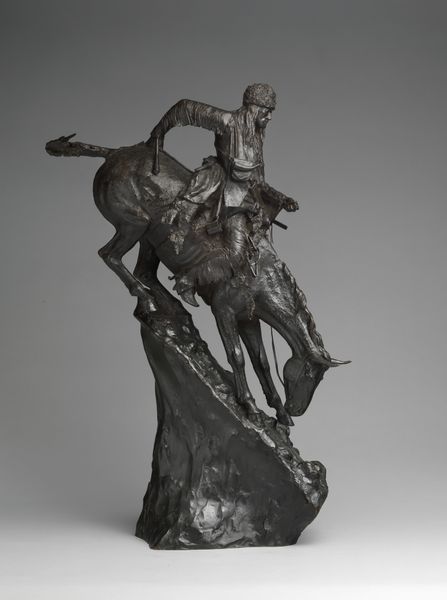
bronze, sculpture
#
16_19th-century
#
animal
#
sculpture
#
landscape
#
bronze
#
figuration
#
sculpture
#
realism
Dimensions: 85.0 x 65.8 x 28.0 cm
Copyright: Public Domain
Constantin Meunier made this sculpture, "At the Trough," out of bronze, a material with a deep connection to industry. Bronze casting is a labor-intensive process. Molten metal must be poured into a mold, cooled, and then carefully finished. Meunier captured a moment of respite. A man pauses, astride his horse, both figures rendered with a palpable sense of fatigue and hard work. The rough texture of the bronze, achieved through the casting process, emphasizes the raw, physical nature of their existence. Meunier's choice of bronze is itself significant. It was the metal of industrial progress, of machines and factories, yet here it serves to memorialize a pre-industrial scene. The sculpture elevates the working class, giving dignity to their toil and suggesting a connection between human labor and the animal world. "At the Trough" highlights the value of craft and challenges traditional hierarchies in art, inviting us to see the beauty and significance in everyday labor.
Comments
stadelmuseum about 2 years ago
⋮
A memorial to an ordinary worker leading his exhausted horse to drink - only in the late nineteenth century did such a thing become possible. After the gods of antiquity had abdicated, sculptors sought out new heroic figures. Having begun as a painter of religious subjects, Meunier became famous above all for his sculptural representations of workers. He argued in favour of an art which addressed the broad masses, the people. This group of horse and rider, which the Städel owns in a smaller bronze version, was created as a fountain monument for the Square Ambiorix in Brussels.
Join the conversation
Join millions of artists and users on Artera today and experience the ultimate creative platform.
